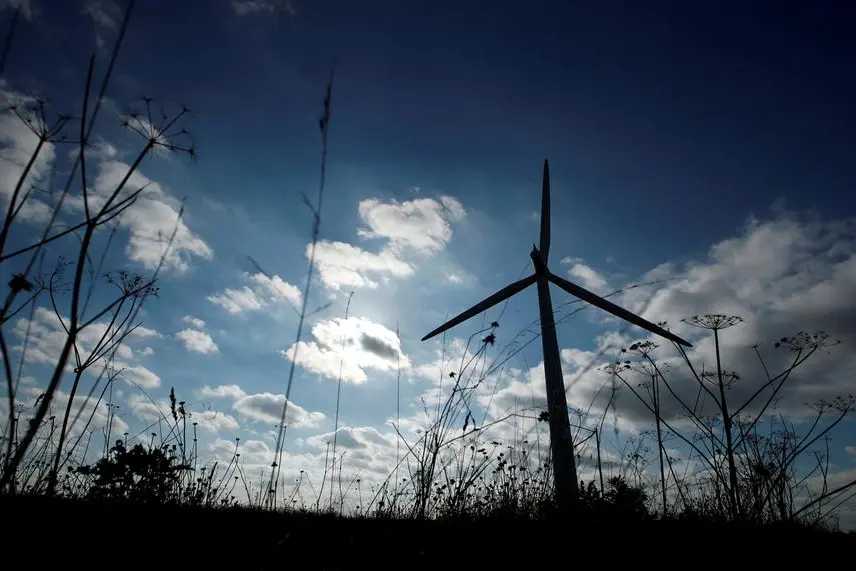PHOTO
(The opinions expressed here are those of the author, a columnist for Reuters.)
LITTLETON, Colorado - After a rough couple of years, exchange-traded funds (ETFs) tied to clean energy generation and distribution are starting to outperform investor vehicles centred on oil and gas exploration and production.
Since the start of 2022, most major ETFs tied to renewable energy generation have lost between 20% and 70% of their value as rising interest rates, supply chain disruptions and a slowdown in clean energy installations cut consumer demand and hit the earnings and stock prices of clean energy companies.
Over the same period, cuts to crude oil output by major producer groups have helped lift earnings for oil and gas producers, which in turn boosted the returns of ETFs tied to that space by more than 50%.
However, over the past month an array of ETFs dedicated to key aspects of the energy transition - from renewable energy generation to smart grid management and uranium extraction - have all posted positive returns just as a major ETF tied to oil and gas output lost roughly 5%.
Several factors could derail this relative recovery in clean energy momentum, including a worsening in Middle East conflict and higher-for-longer interest rates in the United States.
But if a peace deal is reached between Israel and Palestinian militant group Hamas in Gaza and interest rates trend lower in key consumer markets, further pressure on oil and gas prices could materialize just as the affordability of renewable generation equipment improves.
That in turn could potentially accelerate the recent divergence in ETF returns and support clean energy investing trends while undermining the appeal of fossil fuels.
ETF PERFORMANCE HISTORY
Over the past five years or so, investment vehicles tied to clean energy have endured a roller coaster ride.
Appetite for exposure to renewables soared from early 2020 through to the start of 2021 as several major economies adopted supportive policies designed to accelerate the energy transition away from fossil fuels and stimulate the development of industries and expertise in the clean energy arena.
The iShares Global Clean Energy ETF characterized the broad flow of investor interest in clean power during that period, with prices rising by around 180% from January 2020 to January 2021.
Over that same period, investor interest in traditional energy developers dwindled amid a broad push-back against fossil fuels, exacerbated by the global downturn in fuel use during COVID-19 lockdowns.
The S&P oil & gas exploration and production ETF, one of the largest ETFs tracking fossil fuel output, slumped by over 60% through the opening four months of 2020, and finished out the year still nursing more than 40% losses despite recovering mobility and business activity in several economies.
COVID CRUNCH
Following the upsurge in enthusiasm for clean energy in 2020, project developers during 2021 and 2022 experienced acute difficulties in securing sufficient quantities of related equipment - from solar panels and power inverters to racking systems and turbine blades - as supply chains remained impaired by COVID-19 movement restrictions in China and elsewhere.
These restrictions led to major project delays and component cost rises just as widespread interest rate increases curbed consumer purchasing and borrowing power, and resulted in a slowdown in renewable infrastructure build-out across several regions.
Russia's invasion of Ukraine in early 2022 then caused disruption to natural gas and oil flows, which helped lift the prices of those commodities and boosted earnings for several key fossil fuel producers.
TREND REVERSAL
The combination of cost climbs for renewable energy projects and higher fossil fuel prices resulted in a downturn in investor interest in renewable energy ETFs and a steady increase in the returns posted by fossil fuel ETFs since 2022.
Investment vehicles tied to uranium extraction snapped the downtrend in clean power investing since the second half of 2023, as growing policy support for nuclear generation sparked investor positioning in case of a shortage of nuclear fuels.
ETFs tied to electric grid upgrades and smart power management systems also made gains in 2023, as awareness about the challenges of incorporating renewable energy into existing grid systems sparked major utility-scale investments.
So far in 2024, the URA uranium ETF is up by around 14% while the returns posted by the S&P oil & gas exploration and production ETF and the Nasdaq Clean Edge Smart Grid are around 12%.
Other major clean energy ETFs, including the iShares Clean Energy ETF, so far remain in the red on a year-to-date basis.
But if the momentum seen over the past month is sustained, all major clean power ETFs, including the First Trust Global Wind Energy ETF, may soon register positive returns for the year so far, which will serve to boost sentiment across the clean energy space.
And if that sentiment is further boosted by supportive macro-level changes regarding geopolitical tensions and interest rate regimes, additional investor momentum into the broader clean energy ETF space can be expected.
(Reporting by Gavin Maguire; Editing by Sonali Paul)





















